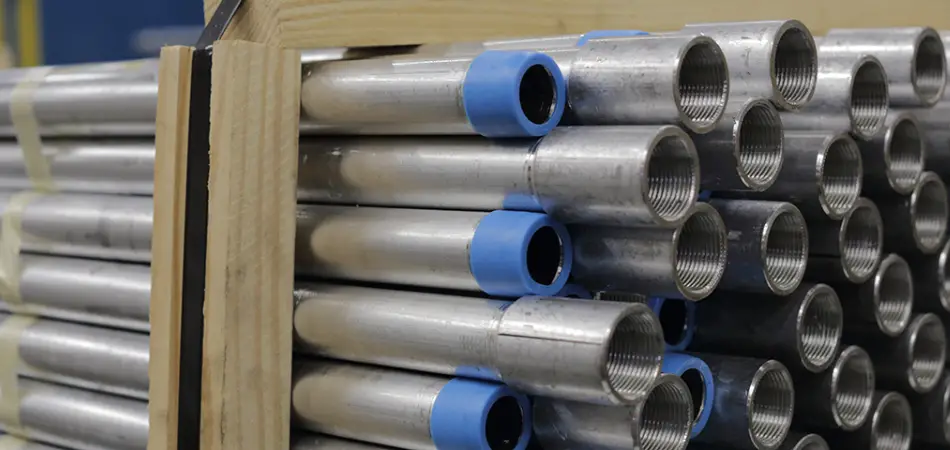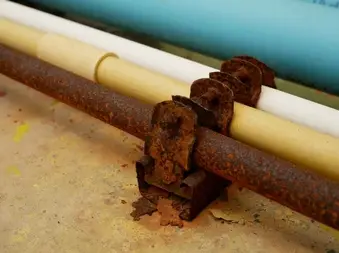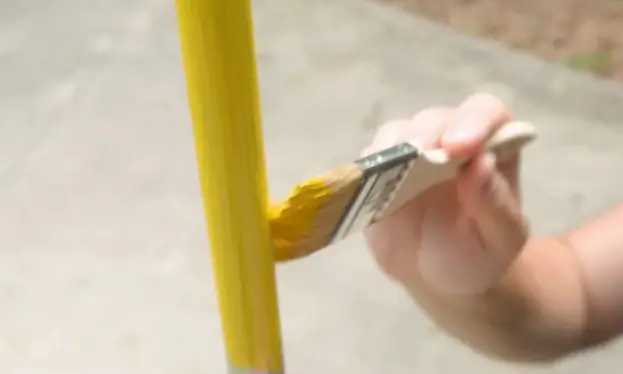Rust is inevitable on any item made from iron, steel, and aluminum. Some could begin to rust as early as six months, and some could take longer before they begin to rust. There have been lots of debate on the chances of EMT conduit to rust but does emt conduit rust when exposed to rust reagents?
Yes, it does. EMT conduit is a steel electric metallic tube pipe designed to prevent moisture and water from entering the electrical system. It is coated with plastic for protection against dirt and dust.
The pipe walls are gapped ever so slightly when the pipe is cut to allow for contraction and expansion of the conduit. This small gap fills with rainwater and, over time, rusts away at the inside wall of the galvanized steel pipe, causing it to fail.
Despite the inherent corrosive properties of moisture and humidity, EMT (Electrical Metallic Tubing) is an extremely cost-effective conduit for industrial tube systems. It is lightweight, easy to install, and compliant with most building codes. The extrusion process produces an incredibly durable tube that will not rust or deteriorate under normal circumstances.
Below are facts you need to know about EMT conduit, how to remove rust, protect and prevent rust in the future.
Contents
Reasons Why EMT Conduit Could Rust?
A typical EMT conduit is coated with materials that will protect it against rust for some years but it will eventually give way to rust after a while. Read on for some of the reasons why EMT conduit could rust.

- Material: EMT conduit is made of either steel or aluminum material. These are natural materials that could get rust easily. Due to the coating, these materials might not get rust quickly, it will, however, give way to rust after a duration.
- Period of use: The coated material on the EMT conduit will not be there forever. It will be depleted gradually after some years of use. When this happens, the conduit will give way to rust due to wear and tear.
- Cutting: The EMT material comes in different sizes and is rigid. With the right tools, you can cut and bend it. When you cut it, the coated material on the two ends is slightly removed, which makes it susceptible to rust.
- Scratches: In the process of fixing the EMT conduit or while moving it into different locations, the protective material on it might have been removed due to scratching, thereby increasing the risk of rust on the scratched location.
- Weather: Different weather conditions, such as rain, snow, and other forms of weather conditions will take their tolls on the EMT conduit, thus, degrading the effectiveness of the coated material on it. After some years of use, it will begin to give way to rust.
Can I Prevent Rust On Emt Conduit?
Typical EMT conduit is usually coated which makes it difficult for it to get rusty. Nevertheless, rust can still occur on the EMT conduit. Highlighted below are some of the things you can do to prevent rust on the EMT conduit.

- Use complete EMT conduit: If you intend to use EMT conduit, you should use the one that is coated and the right size for the intended purpose. Check the surface properly for any possibility of scratch or rust.
- Avoid cutting it: The EMT conduit is coated with materials that could make it resist rust. When you cut any part of the EMT conduit, you have exposed the uncoated part. This will be the part where it will begin to rust. You can avoid cutting EMT conduit by buying the length that will fit the intended purpose of use.
- Avoid scratching: Scratching the outer layer of the EMT is synonymous with taking away the coated material on it, which will make the scratched part susceptible to rust. You should be careful while handling the EMT conduit.
- Paint it: If you are living in an environment where rust occurs easily, you can paint the EMT conduit to give it an extra layer of protection against rust. Also, if you have cut the EMT conduit or noticed any scratch on it, you can paint the end where it was cut or paint the scratched parts.
- Tape it round: There are some special adhesive tapes that you can use to prevent rust on the EMT conduit. Get any of these tapes, wrap them around the surface of the conduit till the entire surface is covered.
- Hire a professional: When used appropriately, it is less likely that rust will occur on the EMT conduit. A professional will know the right size to buy, which will potentially prevent rust that can occur on both ends when you cut the EMT conduit.
- Location: Though it can be used anywhere, the location where you put the EMT conduit will determine how soon it will rust. Avoid damp locations and any other locations where water could easily come in contact with it.
Fixing Rust on EMT Conduit
Rust is inevitable on the EMT conduit, but it will take some years before it occurs, depending on your location. Nevertheless, when it occurs, you can fix it with some DIY methods. Here is a list of some of the few things you can do to fix rust on the EMT conduit.

- Scrub it off: With sandpaper or an abrasive sponge, you can scrub off the rust from the EMT conduit. You should do this thoroughly till the rust is removed from the surface of the conduit. You can only do this for rust that occurs on the outer surface.
- Paint it: You can potentially recover the EMT conduit from rust by painting it. For steel and aluminum paint, you will likely apply paint more than once before you achieve the desired result.
- Replace the rusted portion: Whenever you notice rust on any part of the EMT conduit, if possible, you can replace the pipe immediately.
Conclusion
EMT conduit is coated with protective material that will shield it from rust. Nevertheless, it will begin to give way to rust after some years. You can potentially prevent rust on the EMT conduit by painting or taping it.

